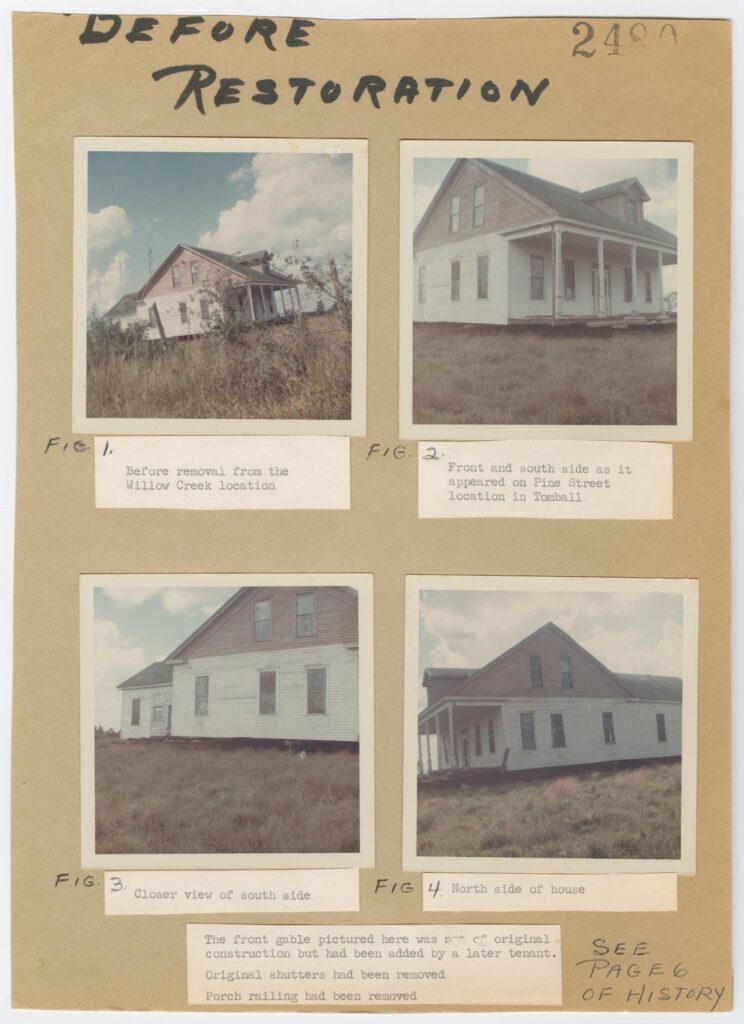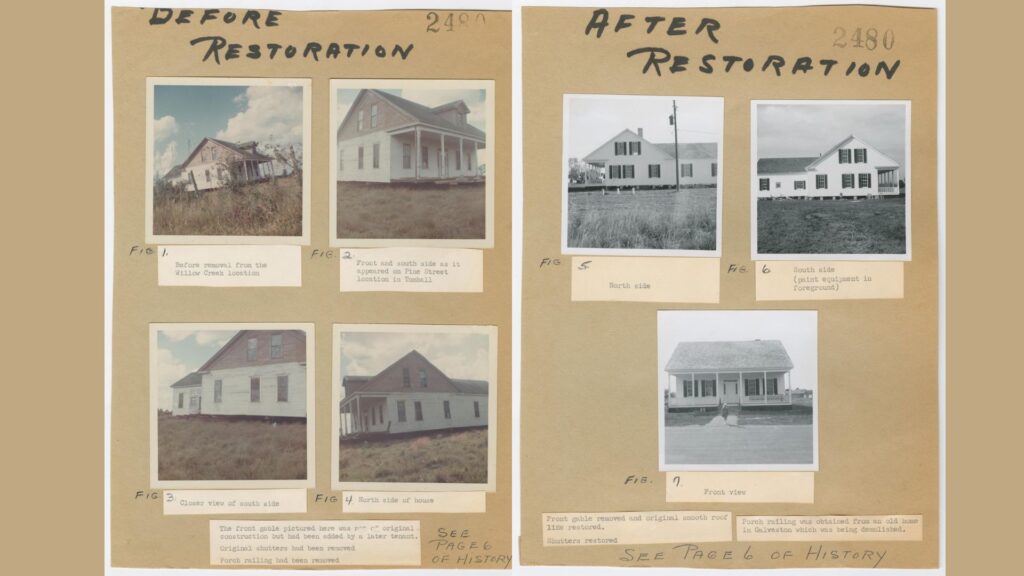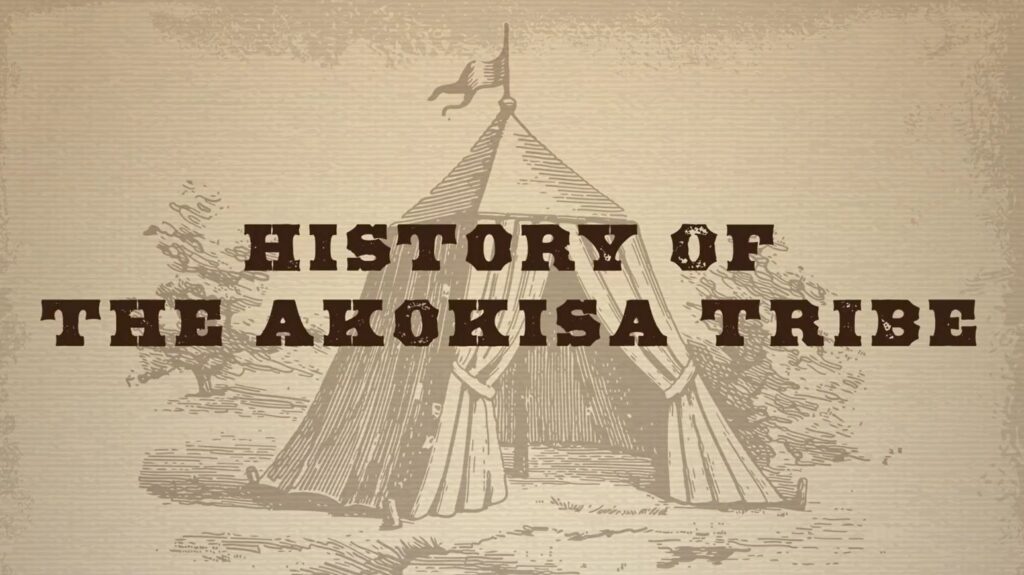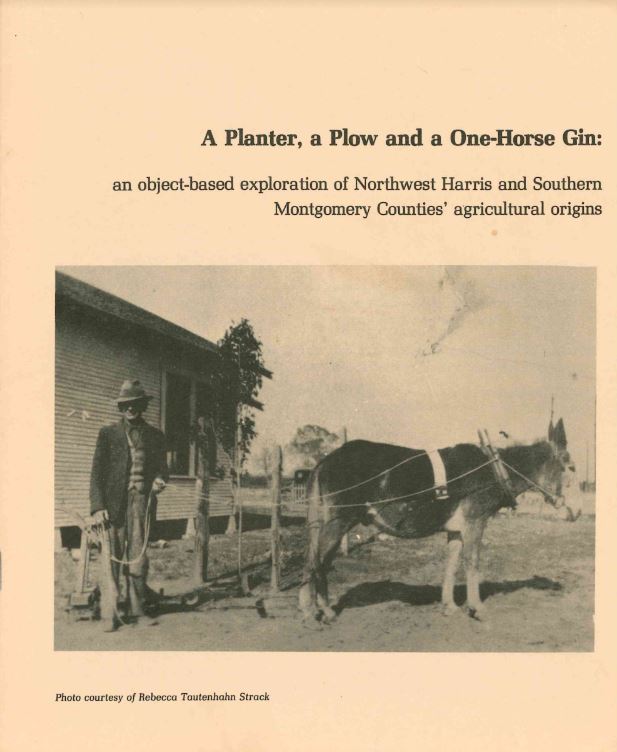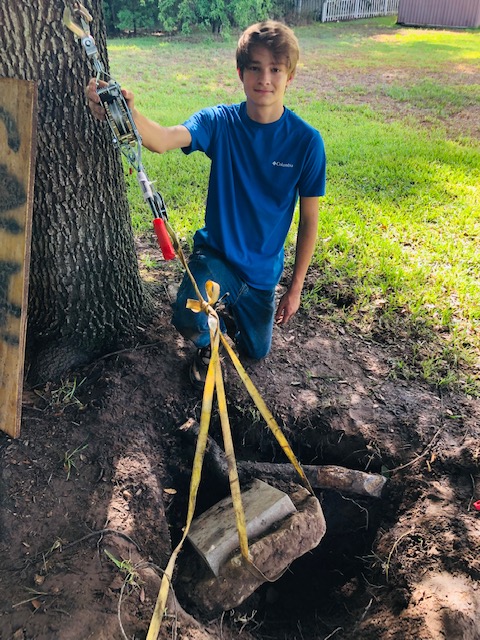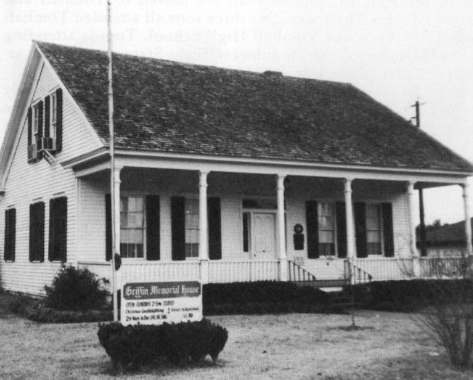
HISTORY OF THE GRIFFIN HOUSE
PART I
The house was originally built on a tract of land which included all of the John Michel (Mitchell) and Wm. Usener Surveys, each of which comprised 320 acres of land lying on the south side of Willow Creek in Harris County and directly south of the City of Tomball.
The State of Texas issued a patent on May 14, 1857, to John Mitchell for his 320-acre tract of land and in the following year one was likewise issued by the State to Wilhelm Usener for his Survey (March 19, 1858). In many cases, before a patent was issued, the law required occupancy, full payment, etc., by the applicant before a patent would be issued; therefore, in all probability both Mitchell and Usener had been in possession of their Surveys some years before they received their patents.
Eugene Pillot acquired title to the Mitchell Survey on September 24, 1858, and to the Usener Survey on January 17, 1860.
Our best information bears out the belief that Eugene Pillot built what we now know as the “Griffin House” at a date prior to 1860 because he moved from there to a new home in Houston prior to the outbreak of the War between the States in 1861 and that when this War began, he moved back to his home on Willow Creek (the original location of the Griffin House) with his family. Mr. C. F. Hoffman, who is past 90 years of age, a former resident of our community for nearly all of his lifetime, states that his grandmother lived with the Eugene Pillots in the Griffin House during the years 1862 and 1863.
On November 2, 1870, Eugene Pillot conveyed the property to his son, Nicholas Pillot, who in turn on April 27, 1897, conveyed it to Otto W. Holm for a consideration of $2,000 of which $1,000 was in cash and the remaining balance of $1,000 was represented by a vendor’s lien note in that amount. On August 31, 1899, Pillot sold the Holm note to Dr. W. A. Archer.
Otto W. Holm and wife on December 18, 1900, conveyed the property to Dr. Archer in consideration of the cancellation of the vendor’s lien note.
Dr. Archer owned the property until February 2, 1918, when he gave the property to his daughter, Mary Virginia Archer Henderson, who, with her husband, C. C. Henderson, on October 26, 1920, conveyed it to John B. Griffin for a cash consideration of $5,000. After the death of John B. Griffin in the early 1930’s his son, Edmond B. Griffin acquired the house and most of the land upon which it was situated. At the death of Edmond B. Griffin, the ownership of the property passed to his daughter, Mrs. Ruth Griffin Mc Court, who in 1965 conveyed the House to Spring Creek County Historical Association which contracted to move the House to Tomball, restore it, and give it the name of its recent owners, calling it “The Griffin House”.
The foregoing History was compiled either by George L. Charlton or Magdalene Charlton, his daughter, both of whom are deceased. The “History” was filed with papers pertaining to the affairs of Spring Creek County Historical Assn. which was organized September, 1961.
A TRANSCRIPT OF NOTES TAKEN FROM THE ABSTRACT OF TITLE IN SUPPORT OF THE ABOVE HISTORY IS ATTACHED :
May 14, 1857:
320 Ac. Survey patented to John Mitchell /sometimes shown as John Michel/ on Willow Creek, bounded on N. by C. N. Pillot Sur., on East by E. Smith League, and on South by Wm. Perkins 22E Labor Grant,
March 19, 1858:
320 Ac. Survey patented to Wilhelm / Wm./ Usener, on Willow Creek, bounded on N. by C. N. Pilot Survey, on E. by John Mitchell, on S. by Wm. Perkins 22 1/2 habor Grant, and on W. by A. Seneschal.
May 4, 1858:
John Hermann, Admr. of the Est. of John Michel /Mitchell/, dec’d., sold 320 Ac. Sur, of John Mitchell, on Willow Creek, to William G. Painter. By order of Probate Court.
Sept. 24, 1858:
William G. Painter conveyed 320 Ac, Mitchell Sur. to E. /Eugene/ Pillot, Vol. 7, p. 297, Deed Records Harris County
Jan. 17, 1860:
Frederic Usner, brother and sole heir of WUn. Usner, conveyed 320 Ac. Wm. Usener Survey on Willow Creek to E. Pillot. Vol. 7, p. 298 Deed Rec.
Nov. 2, 1870:
Eugene Pillot conveyed to Nicholas Pillot /one of his sons/ 215 acres of land out of the Usener and Mitchell Surveys, / description in error, and a Correction Deed was made Feb. 27, 1896/ Original, dated 1870, recorded Vol. 9A, p. 202, Deed Records.
April 27, 1897:
Nicholas Pillot and wife, Pauline, conveyed the 215 Ac, tract to Otto W. Holm. $2000, of which $1000. was in cash and the balance payable in ten annual Notes. Recorded Vol.’96, page 592, Deed Records Harris County.
August 31, 1899:
Nicholas Pillot sold Holm Notes to Dr. W. A. Archer of Harris County. Vol. 116, p. 31, Deed Records
December 18, 1900:
Otto W. Holm and wife Hermina conveyed the 215 Acre tract to Dr. W. A. Archer in consideration of the cancellation of the Notes above referred to.
Feb. 2,1918:
W. A. Archer made Deed of gift of the 215 Acre tract to his daughter, Mary Virginia (Archer) Henderson. Vol. 384, P. 514, Deed Rcds.
October 26, 1920:
Mary Virginia (Archer) Henderson and husband, C. C. Henderson, conveyed the 215 Acr tract, together with all improvements thereon situated, to John B. Griffin, for $5,000.00 cash,
Feb. 3, 1923:
#103632 LIS PENDENS Edmond Griffin et al vs. John B. Griffin. For establishing the rights of Plaintiffs to their share of community property of their mother, Drucilla Griffin, who died March 25, 1920.
1930: John B. Griffin died intestate on the 215 Acre tract on Willow Creek.
1931: Edmond B. Griffin, a son of John B. Griffin, purchased the interests of his two sisters, Vena Griffin Faris and Frances Griffin Donaldson.
PART II
The old “Pillot House” now known as the “Griffin House” now stands at the north end of Pine Street in the town of Tomball. From its original location which was near the route of the Atoscosita Trail, it now stands in a spot which also has historic significance, being in the area known as “Spring Creek County” which was organized by the Congress of the Republic of Texas about the year 1840. It included, roughly, all of the area lying between what we now know as Lake Creek, in Montgomery County, and Cypress Creek, in Harris County, and it was created to settle a dispute between Montgomery County and Harris County as to the boundary line between the two counties. Old Spring Creek County existed for several years until a decision of the Supreme Court of the Republic of Texas held that its formation and that of several other counties, was unconstitutional. Thereafter the boundary line between Harris and Montgomery Counties was fixed at Spring Creek and this boundary has remained to the present time.
Details of the lives of the earliest settlers of the Spring Creek area are scarce and hard to find. However, in the 1880’s and 1890’s there came into vogue what historians and genealogists now call “Mug Books”. One such book bearing the title “History of Texas, Together with a History of the Cities of Houston and Galveston, published in 1895, has a long article on EUGENE PILLOT, son of Claude Nicholas Pillot, who settled with his family on Willow Creek in 1837. Excerpt from the article follow: “Eugene Pillot, one of the old settlers of Harris County and a resident of Houston since 1868, is a native of France, having been born in the department of Haute Saone on the 10th day of February, 1820. For many generations, extending back even to the Thirteenth Century, his ancestors were residents of this part of France, where they were people of great respectability, mostly farmers by occupation and manufacturers of oil from hemp and grape seed and from the seed of the French walnut. His father’s full name was Claude Nicholas Pillot, and his mother’s maiden name was Jeanne Loiseley or Loiselle. They were born at the close of the last century, the father on August 10, 1793, and the mother on January 3, 1790. They were married in their native place and resided there where the father was engaged in teaching until 1832, when they emigrated to America and remained for a time in New York State . . .where the father was engaged in the timber business and at his trade as a carpenter and a joiner until August, 1837 , when he moved with his family to Texas and took up his residence in Harris County, on Willow Creek, twenty-six miles north of Houston.
Here he ‘laid a headright’ and established himself as a farmer, following this business with reasonable success until his death, which occurred in the city of New Orleans in 1863, while in blockade at that place following a business trip to his native country. His wife died three years later, at the old homestead in Harris County. Of their five children but one is now living, Eugene, the subject of this notice. The oldest daughter, Hannah, was married to a man named Phipps and died a number of years later in Harris County, where her descendants now live. The second son, August (Eugene being the eldest), died in this county in 1844, at the age of 21, unmarried. The third son, Gabriel, died also in this county, in 1859, leaving a son bearing his name who lives near Waco, Texas. Rosalie, the youngest daughter, was married to D. Deschaume, and died here in 1864, at the age of 27, leaving eight children.
“Eugene Pillot learned the trade of carpenter and joiner under his father in New York, and put his knowledge to good use after coming to Texas, becoming one of the first builders of Harris County, He recalls the fact that he assisted in putting up some of the first buildings that were erected in Houston,” one of which was a small one-story frame structure which was occupied as a general store and stood on the site of Kiam’s present imposing five-story brick building on the corner of Main Street and Preston Avenue [NW Corner]. After a short residence in Houston, he moved to the country with his father and in a measure abandoned his trade, turning his attention to the timber business, which he found very profitable and followed it successfully for some time. Later he took up farming and for 25 years was one of the leading planters of Harris County. The rapid settling of the country and the increased demand for building material caused him again to embark in the lumber business, which he followed until 1867, at which time he sold out his sawmill interest and, on January 1, 1868, moved to Houston, where he already owned considerable real estate to the improvement of which and to other private interests he turned his attention, . . . .
“On January 7, 1845, Mr. Pillot married Miss Zeolie Sellers, a daughter of Achille Sellers and a native of parish Lafayette, Louisiana. Mrs. Pillot comes of French extraction and is a member of one of the old French families of Louisiana. She is one of eight children but two of whom, besides herself, are now living. She has a brother, Peter Sellers, who resides at Hockley, in Harris County, this State, and a sister, Mrs. Amelia Ann House, who lives at Ennis, in Ellis County. Mr. and Mrs. Pillot are the parents of twelve children, six sons and six daughters, but six of whom are now living; three having died in infancy and three in early childhood and youth—-Celeste at the age of four, Alexander at the age of-thirteen. and Joseph at the age of eighteen. Those living are Julia, now Mrs. Clemille Sellers, of Harris County; Nicholas, who resides near the old homestead in this County; Celestine, the wife of Charles F. Saigling, of Plano, Collin County, this State; Camille, a member of the firm of Henke & Co., wholesale grocers of Houston; Seolie, wife of Jacob Hornberger, a leading citizen of Houston; and Teoline, clerk in the book and stationery house of W. J. Hancock & Co. of this city. Mr. Pillot has 22 grandchildren and 4 great-grandchidren.”
PART III
The present condition of the House is excellent. The interior has been restored by applying sheetrock over existing walls downstairs, and repapering the two bedrooms, parlor, sitting room and large entrance hall. The back porch has been enclosed to allow access to modern sanitary facilities which were installed for public use since the building will be used as a museum (downstairs), and a public meeting place (upstairs). The large kitchen, back porch, and upstairs meeting room have been painted. The roof has been reshingled, porch floor and railings repaired and painted. The exterior of the house has been repaired and repainted. Spring Creek County Historical Association has been responsible for all restoration work and will continue to be responsible for the upkeep. The building will house the Magdalene Charlton Memorial Museum, and the upstairs will be available for meetings, lectures, arts and crafts classes and other cultural pursuits. As to the architectural interest, it is believed that the New England flavor of the House was no doubt due to the eastern influence of the builder, Eugene Pillot, from his early residence in New York where he learned the trade of carpenter and joiner from his father Claude N. Pillot. The house is constructed entirely of heart pine from virgin timber, and is intact except for the necessary repairs to restore and improve the appearance. It has the original entrance and hardware, including “keyhole covers” on the doors, and porcelain knobs. Of historical interest is the Letter Patent issued to CLAUDE N. PILLOT, a copy of which follows:
C/C LETTER PATENT RECORDED DEED RCDS VOL 275, p. 388
DATED: February 11, 1846 FILED: Sept. 9, 1911 at 11:05 P.M.
FROM: Rep. of Texas by Pres. #88966
TO: CLAUDE N. PILLOT
No. 757, Vol. 1. In the name Republic of Texas. To all to all these presents shall come, Know ye, I, Anson Jones, President of the Republic aforesaid, by virtue of the power vested in my by law and in accordance with the Statutes of said Republic in such case made and provided, do by the presents grant to Claude N. Pillot, his heirs or assigns forever, twelve hundred and eighty acres of land, situated and described as follows:
In Harris County on Willow Creek, a branch of Spring Creek about twenty five miles north west of the City of Houston beginning on the Smiths {Elizabeth Smith} south west boundary line a “stake and mound” in the prairie being also Underwoods corner; from which a fork Black Jack bears north 45 degrees East 22 varas all marked P.
Thence north 45 degrees west with his line & passing his west corner 2560 varas to a mound in the prairie (crossing Willow Creek at 100 varas);
Thence west sixteen hundred and sixty four varas (crossing the San Fellipe road) to a stake and mound in the prairie;
Thence north three hundred forty eight varas with Hurds south boundary line to his south east corner a stake and mound in the prairie;
Thence west thirteen hundred and forty four varas with Hurds south boundary line to his southwest corner a stake and mound in the prairie on Hoopers east boundary line;
Thence south twenty one hundred and fifty one varas with said Hoopers line parsing his and Goodrichs corner, to a stake and mound in the prairie on Goodrich’s line;
Thence east forty six hundred and fifty varas passing Underwoods north west corner at 705 varas and crossing Willow Creek at 1005 varas and again at forty one hundred and forty five varas to the place of beginning.
Hereby relinquishing to him the said Claude N. Pillot, and his heirs or assigns forever, all the right and title in and to said land, heretofore held and possessed by the Government of said Republic and I do hereby issue this Letter Patent for the same.
In testimony whereof I have caused this great seal of said Republic to be affixed as well as the seal of the General Land Office done at the City of Austin on the Eleventh day of February one thousand eight hundred and forty six and the year of Independence of said Republic the tenth.
Anson Jones, President
Thos. Wm. Ward, Commissioner
Also of historical interest is the fact that the strategic location of the original “Pillot” house near the route of the Atascosita Trail, was a convenient stopping off place for General Sam Houston on his travels. This is borne out in the history of Dr. John Clemille Sellers, whose grandfather was Eugene Pillot. (Page 735, New Encyclopedia of Texas – Davis and Grobe Edition-Vol. I). The house was the center of community life, with school classes having been held in the upstairs room during the week. It seems to have been a center for quilting bees, as places were found in this room for hanging quilting frames. It was also the place for holding large weddings and receptions. Many present-day oldtime residents recall having attended affairs of this nature, square dances and other social events.
Parts II and III of this History compiled by Harvey Evans, President of Spring Creek County Historical Association, and Pearl R. Meath, Publicity Chairman, June 22, 1968. TRANSCRIPT OF TEXT FROM NEW ENCYCLOPEDIA OF TEXAS (DAVIS AND GROBE EDITION-VOL. I) ABOVE REFERRED TO, FOLLOWS:
Page 732: Dr. John Clemille Sellers Near bottom of the page: His mother was Julia Pillot Sellers, who lives at Spring, Texas, and is eighty years of age. She is a sister of C. G. Pillot of Henke and Pillot, T. Pillot of Teolin Pillot Company, N. Pillot, retired lumberman; Mrs. Zeolide E. Hornzerger, widow of Jacob Hornberger; and Celestine Saigling of Plano
Top of Page 735: Eugene Pillot, the father of the foregoing, came to Houston from France in early days and became one of the prominent and wealthy citizens here, owning a great deal of valuable business and other property. He lived at Spring, Texas, where General Sam Houston often changed stages, and often remained as a guest at the Pillot home.
Texas Historical Commission. [Historic Marker Application: Griffin Memorial House], text, 1965; (https://texashistory.unt.edu/ark:/67531/metapth477730/: accessed March 18, 2023), University of North Texas Libraries, The Portal to Texas History, https://texashistory.unt.edu; crediting Texas Historical Commission.
